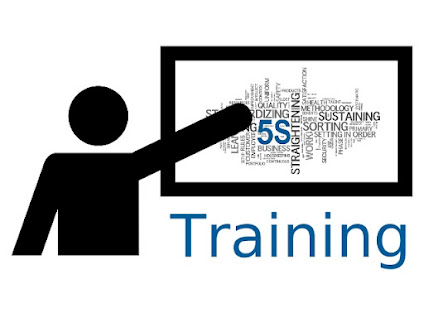7 QC Tools: Why Every Professional Should Invest in Training
In today's fast-paced and competitive
business environment, quality control has become a critical aspect for
organizations to stay ahead of the curve. With increasing customer expectations
and the need for continuous improvement, companies must prioritize quality
control to ensure their products and services meet the highest standards. This
is where the 7 QC Tools come into play.
The 7 QC Tools, also known as the
Seven Basic Tools of Quality, are a set of techniques used for quality control
and problem-solving in various industries. These tools were first introduced by
Japanese quality expert, Kaoru Ishikawa, in the 1950s and have since been
widely adopted by organizations worldwide. They include the Pareto Chart, Cause
and Effect Diagram, Check Sheet, Histogram, Scatter Diagram, Control Chart, and
Flowchart.
While these tools may seem simple,
their impact on improving quality and efficiency in the workplace is
significant. That's why every professional should invest in 7 QC Tools training. Let's explore why.
1) Enhance
problem-solving skills
One of the main reasons why
professionals should invest in 7 QC Tools training is to enhance their
problem-solving skills. These tools provide a structured and systematic
approach to identifying and analyzing problems, making it easier to find the
root cause and develop effective solutions. With training, professionals can
learn how to use each tool effectively and apply them in different scenarios to
solve complex problems.
2) Improve
decision-making
The 7 QC Tools are designed to help
professionals make data-driven decisions. With the use of these tools, data can
be collected, organized, and analyzed to identify patterns and trends. This
enables professionals to make informed decisions based on facts rather than
assumptions. Training in these tools equips professionals with the skills to
interpret data accurately, leading to better decision-making.
Also Read: 5S Training
3) Increase
efficiency and productivity
In today's fast-paced business world,
time is of the essence. The 7 QC Tools help professionals streamline processes,
eliminate waste, and reduce errors, leading to increased efficiency and
productivity. By investing in training, professionals can learn how to use
these tools to identify and eliminate bottlenecks, reduce cycle times, and
improve overall process flow.
4) Promote a
culture of quality
Quality should be ingrained in the
culture of an organization. By investing in 7 QC Tools training, professionals can learn how to
integrate quality control into their daily work routines. This, in turn,
creates a culture of quality within the organization, where every employee is
responsible for ensuring high standards are met.




Comments
Post a Comment